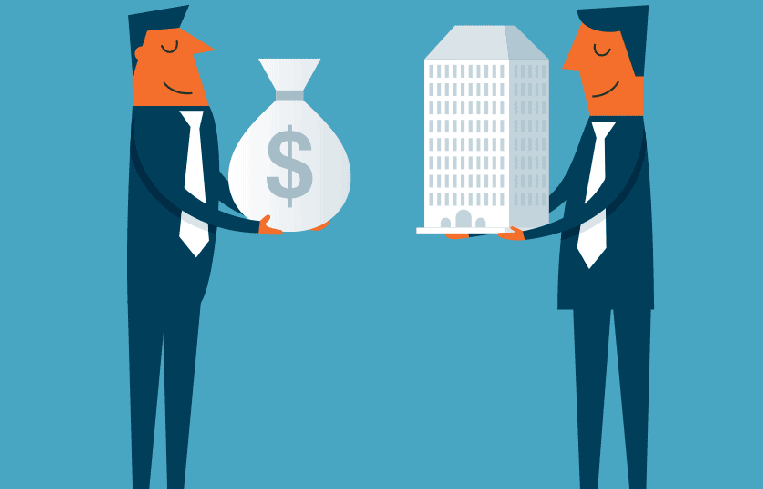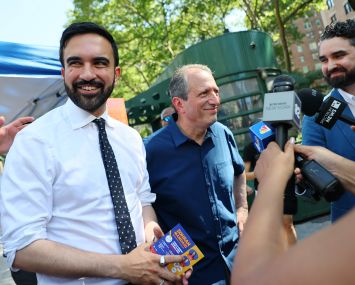Now That the Fight Over 421a Is Ending, Let’s Discuss NYC Property Taxes, Shall We?
By Terence Cullen November 16, 2016 9:00 am
reprints
The real estate community spent nearly a year collectively holding its breath, but the 421a tax abatement should be coming back in the near future.
Although the state legislature still has to take a vote, the Real Estate Board of New York and the Building and Construction Trades Council of Greater New York reached an agreement last week that brings the tax break back to life, which provides incentives to developers to build housing that has an affordable component.
Since it went into a 10-month purgatory (after REBNY and the Trades Council couldn’t reach an agreement in January), there have been concerns over what this will do to the construction of middle-class rental housing. Developers bemoaned that without the tax break, it would be impossible to construct new units (below market rate or otherwise) because property taxes in New York City are simply too high.
Just for a second, let’s look at the second part of that sentence: The taxes are too much to make economic sense.
Indeed, there was the argument that the abatement has not really addressed a bigger problem: taxes. Developers and affordable housing advocates usually have to lobby state politicians every few years to have the break renewed. The complaint among some is that real estate taxes on rental buildings in New York City are disproportionately higher compared with similar properties within the five boroughs.
Landlords might not even need the abatement, reform advocates said, if property taxes were restructured to take some of the burden off the Big Apple renters who are impacted by the rates. This is a lofty goal, however, and some admit that changing levies on buildings to impact condominium and single-family homeowners would essentially be political suicide.
“The reality is that 421a is a Band-Aid over a disparity on taxation of existing product versus to-be-built product,” said Jeffrey Levine, the founder of Douglaston Development, which has built a number of rental properties in the city. “If you really want to fix this problem going forward, we have to get the city and the state to make the taxation of residential units, as well as commercial office buildings, balanced and fair. Because we can’t continue this Band-Aid of 421a.”
Naturally, no one particularly likes paying taxes. But ask the rental housing developers of New York City willing to talk about this issue, and they’ll instantly come at you with numbers that are brutal.
Basically, property taxes on a rental building are about 30 percent of a building’s income. If, say, the gross revenue on a multifamily building somewhere in the city is $5 million, roughly $1.5 million of that goes to the taxman.
This becomes difficult to sustain, experts said, because for-rent properties typically require longer returns on investment than say a condo or co-op building.
“At full taxes, a new rental building will have insignificant returns or even negative cash flow at stabilization,” Jordan Barowitz, a spokesman for the Durst Organization, said in an email.
Durst officials announced earlier this year that it had to put off future phases of its Hallets Point development in Astoria, Queens, because it couldn’t make the numbers work on the rental-housing development without 421a. That’s been the tune many sang during the near 10 months that 421a was expired this year, as the number of new construction permits filed with the New York City Department of Buildings plummeted.
“You just cannot build market-rate housing, or any housing for that matter, if you’re paying 30 percent of your gross income away in real estate taxes,” said Charles Bendit, the co-chief executive officer of Taconic Investment Partners, which is codeveloping the Essex Crossing project on the Lower East Side. “The 421a program is a great program because in return for a real estate tax abatement you’re getting affordable housing. And I think that’s a great trade off.”
This isn’t just speculation—it has saved landlords a lot of money citywide, and they in turn have provided affordable housing. The New York City Independent Budget Office, a watchdog agency focusing on fiscal responsibility, estimated in September that the city missed out on $1.4 billion in tax revenue that landlords saved through 421a in the fiscal year ending in June 2017—nearly $200 million more than a year earlier. For a little context, that could practically fund the $1.52 billion budget to run the 6,000-employee New York City Department of Mental Health and Hygiene this year.
Taxes on rental buildings are typically higher because the properties are considered money-making entities, said Ken Weissenberg, the partner in charge of the real estate services group at accounting firm EisnerAmper.
“Somewhere in the distant past, they felt that rental real estate is a business,” he said, “and that they should pay a higher proportionate rate of tax than people who use properties as their residences.”
As Weissenberg explained, property taxes on multifamily buildings—rental, condo and co-op—are determined through a number of steps. Basically, the city figures out the market value of a building based on a myriad of factors. It then calculates what it calls the assessed value, which is approximately about 40 percent of the market value. Then the tax rate—whatever it might be in a given fiscal year—is applied to that new assessed value.
A landlord usually files a report with the city on how the building is doing every year, Weissenberg said, which then influences how much a building is taxed. Let’s say a building is 60 percent rented in its first year of operations, but 75 percent leased out in the second year. The taxes on the property will adjust accordingly based on the change.
It’s crucial to have 421a on new residential construction because it freezes the property taxes at what they were before the building went up, Weissenberg continued.
Bendit said having 421a in this respect could make a big difference. For example, a site that was formerly manufacturing may have paid $3 per square foot in taxes, and that would be a huge discount from say $20 per square foot on a residential building that doesn’t have tax breaks, he added.
While rental buildings are in the same property class as co-ops and condos, landlords and other experts have maintained that the share of the tax burden between them is unfair even if they’re calculated by the same metric. Weissenberg said that’s because many people who own apartments can be taxed less than is the owner of a rental property if the unit is their primary residence—bringing the tax level closer to that of a single-family home.
“It’s basically an equalization to say, ‘Okay, if you buy a $500,000 house, you’re going to pay $3,000 in taxes,’ ” he said. “If you buy a $500,000 apartment, you would pay $6,000 in taxes. So they’ll make this abatement so you’ll pay $4,500. It makes it closer to single-family, but not quite.”
Renters, whether they realize it or not, end up bearing most of the property tax burden in New York City because the high levies are folded into their rent, said Howard Husock, the vice president of policy research at the conservative-leaning Manhattan Institute think tank. If a landlord is for some reason unable to pass the taxes on to the tenants by way of rent, Husock added, he might be forced to defer things like quality maintenance of the property or upgrades.
“I think the dispute about 421a should rightly raise a much larger question: Why are tax abatements even necessary to build new rental housing in New York?” Husock said. “If you take action to equalize the tax rates, you’re helping poor people. The current system disproportionately advantages the more affluent people in New York. If you have a Park Avenue co-op, you’re getting a good deal on your taxes. Why would we want to do that?”
Although there were plenty of projects approved with the tax break before it expired on Jan. 15, and plenty that will no doubt come are the abatement gets new life, many people CO spoke to for this story have indicated that there will eventually be a slow down in rental construction. With land and construction costs rising, a developer wouldn’t make enough money back to cover the costs without charging eye-popping rents that many New Yorkers won’t be able to pay.
“The cost for building is so expensive and taxes are so high, it would seem elementary that to do some type of tax reform might encourage property owners to build additional rental housing,” said Martin Heistein, a partner specializing in real estate with law firm Belkin Burden Wenig & Goldman. “The easing of the tax burden should in principle help stabilize the rents.”
George Sweeting, a deputy director at the city’s IBO, testified on this issue before the New York State Assembly’s committee on real property tax in January. He spoke to the argument that taxes were unfairly tilted against multifamily housing and that reducing them would ease some of the lengthy battles for tax breaks.
Reforming property taxes in the five boroughs might be easier said than done, however. You see, 35 years ago New York State set up the classification for buildings to determine how they should be taxed. It’s up to the municipal government to set those rates, which are typically the highest on Class 2 structures—residential co-ops, condos and rental buildings.
While developers are hopeful that changes to property taxes could actually change, others are more cynical about the situation. For starters, it would require a hyper-collaborative effort between city and state government—something not likely given the years-long feud between Gov. Andrew Cuomo and Mayor Bill de Blasio, said one real estate veteran who spoke on the condition of anonymity because of the sensitivity of the subject.
There’s also the matter of money. Property taxes are a major revenue source for the city, and the New York City Department of Finance indicates they amounted for 42 percent of the city’s tax dollars collected between July 2014 and June 2015. That money went to fund essential services, according to information from the DOF, such as the New York Police Department, schools, health and welfare and other city agencies such as the New York City Department of Transportation.
Levine said that because city officials are leery to raise existing taxes on properties because it creates what he calls the “punishment of the unborn.” As others noted, taxes on an existing property aren’t likely to skyrocket because voters could turn on those who raised them. So elected officials, Levine said, are more inclined to put higher property taxes on new buildings, where the renters (the unborn in this scenario) go in already knowing they’ll be paying a higher price.
“[Elected officials] don’t want to [increase taxes proportionately] because that will alienate their constituents who will vote them out of office,” he said. “On the other hand, when you put high taxes on a new to-be-built product, there is not yet a resident who is a voter, and that resident is making a decision to move into that property on the basis of the higher taxes. So he cannot blame the elected.”
The industry maven added that a change would require someone willing to serve a single term as mayor and never seek higher office. That’s because the current system doesn’t impact small homeowners, who might be less inclined to vote for someone who upped their taxes, he added.
“The city will always manipulate the tax system such that it’s collecting the maximum amount of tax while impacting the fewest amount of voters,” the real estate veteran said.


